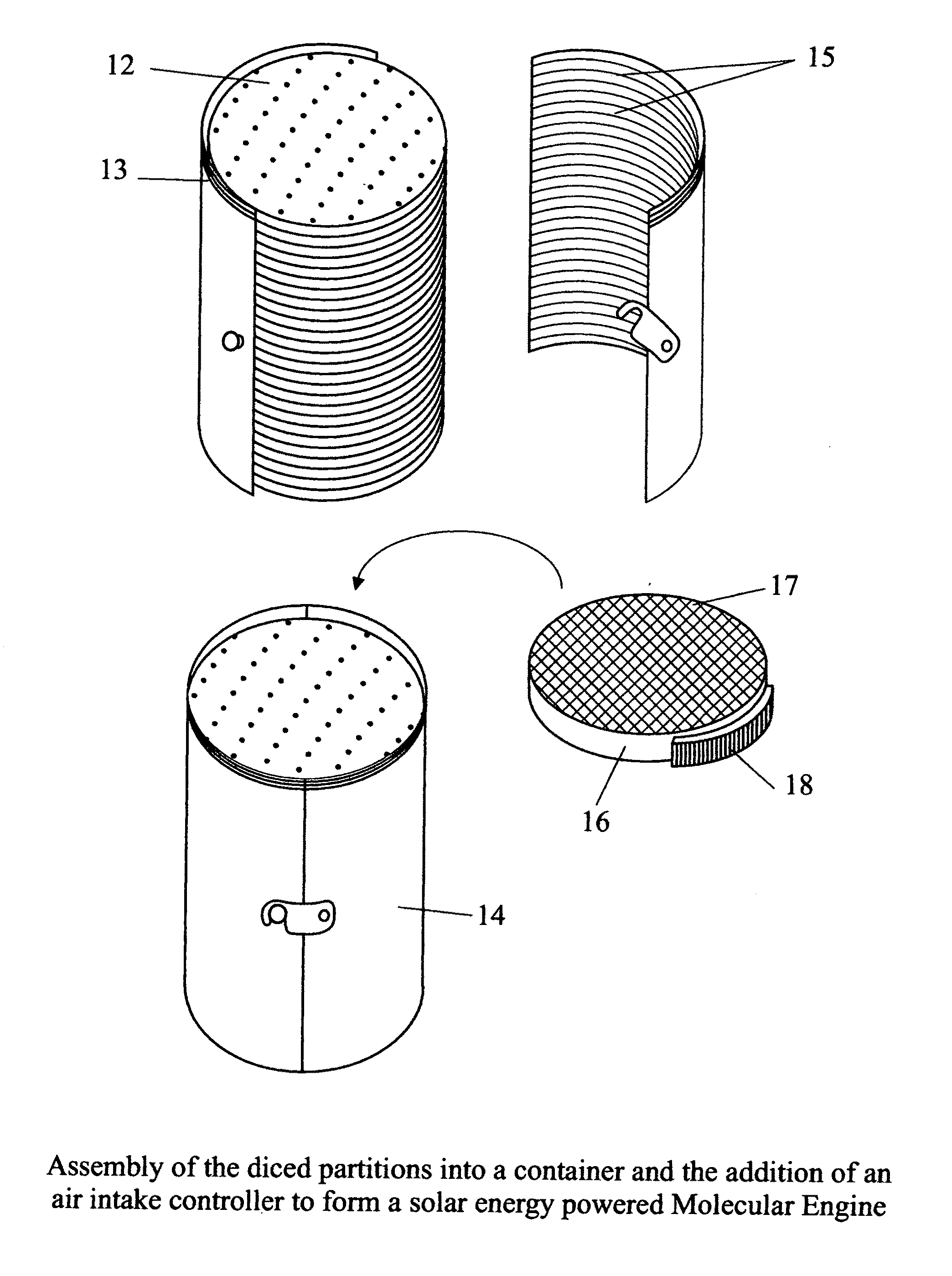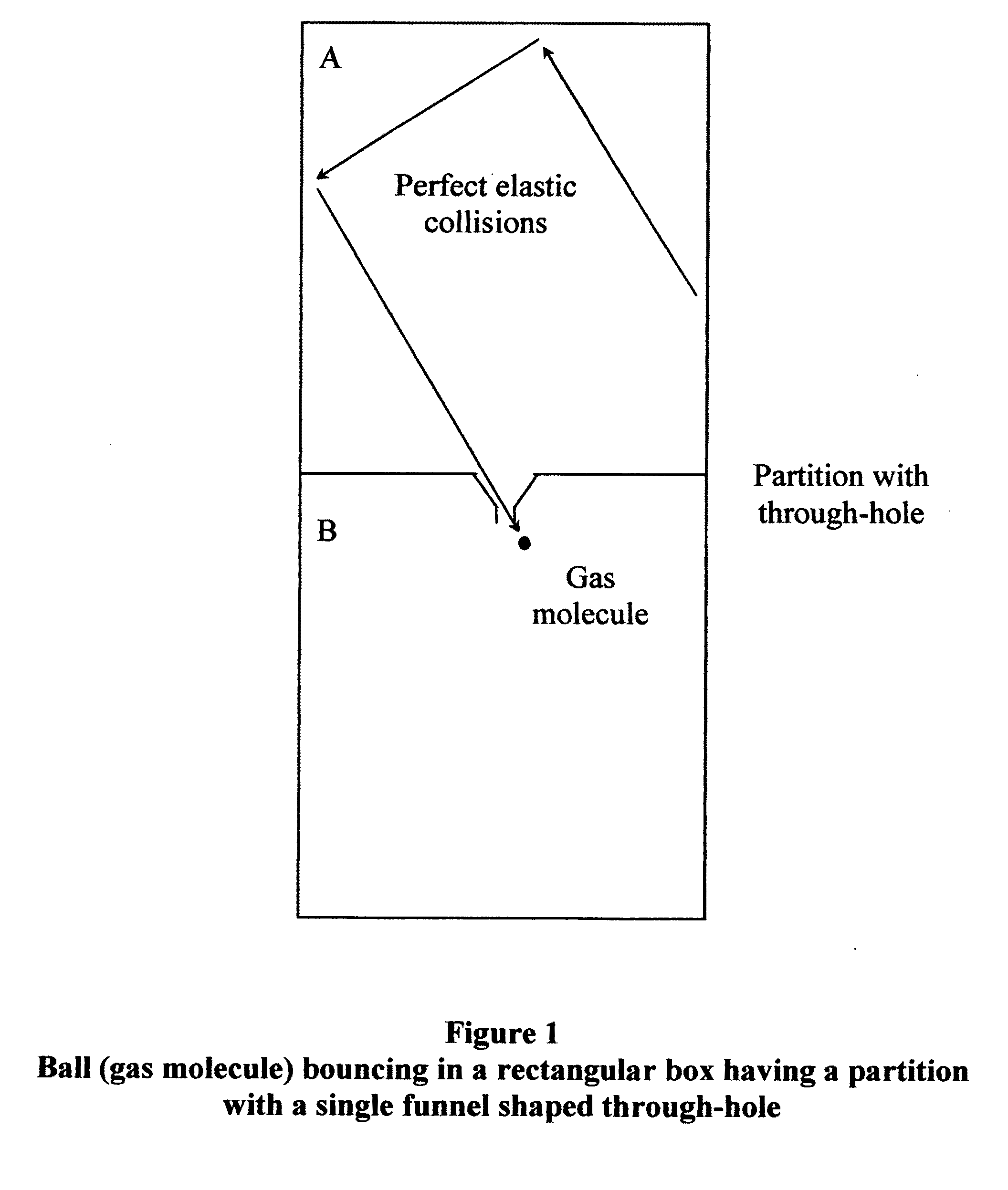Solar energy powered molecular engine
a molecular engine and solar energy technology, applied in the direction of machines/engines, life-saving devices, metal-working apparatuses, etc., can solve the problems of not producing energy or electricity half the time, reducing the viability (as well as increasing the cost) of either method, and not holding true, so as to achieve a greater cross section and higher statistical probability for molecules.
- Summary
- Abstract
- Description
- Claims
- Application Information
AI Technical Summary
Benefits of technology
Problems solved by technology
Method used
Image
Examples
Embodiment Construction
[0021]The basic concept of this invention can best be described by the following sequential scenarios:
1. In a 2-dimensional rectangle, a partition is inserted in the middle to separate the rectangle into two equal halves. A straight through-hole is added to this partition to allow any perfectly elastic bouncing ball to pass through. When a ball with a finite velocity and with a diameter smaller than the hole is injected into this rectangle, it will bounce from one half to another through the hole. After a sufficient time period, one will find the ball will spend equal time on the two halves of the rectangle.
2. Instead of a 2- dimensional rectangle, a 3-dimensional rectangular box is replacing the rectangle. A partition of certain thickness with a right size of round through-hole having straight side (non-tapered) wall is inserted into the middle of this sealed box and a single perfectly elastic ball is injected into the box with a fixed velocity. In an ideal situation, the ball will...
PUM
| Property | Measurement | Unit |
|---|---|---|
| Length | aaaaa | aaaaa |
| Diameter | aaaaa | aaaaa |
| Speed | aaaaa | aaaaa |
Abstract
Description
Claims
Application Information
 Login to View More
Login to View More - R&D
- Intellectual Property
- Life Sciences
- Materials
- Tech Scout
- Unparalleled Data Quality
- Higher Quality Content
- 60% Fewer Hallucinations
Browse by: Latest US Patents, China's latest patents, Technical Efficacy Thesaurus, Application Domain, Technology Topic, Popular Technical Reports.
© 2025 PatSnap. All rights reserved.Legal|Privacy policy|Modern Slavery Act Transparency Statement|Sitemap|About US| Contact US: help@patsnap.com



